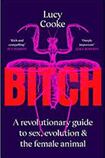
Science is fallible and even the greatest scientists, such as Charles Darwin, can succumb to the prejudices of the times in which they live. In the Victorian era, women were widely regarded as meek, weak, maternal nest-builders who were, by their nature, utterly uninterested in having sex. Darwin took this bias onboard, the author Lucy Cooke argues, and he came to see women as uninteresting from the standpoint of trying to pin down the forces driving evolution and genetic diversity.
How wron
g he was, argues Cooke, a British TV presenter, writer and zoologist who was tutored at Oxford in the 1980s by the renowned evolutionary biologist Richard Dawkins. Cooke is unafraid to take pops at Darwin – who she acknowledges as a British scientific icon – and some of his most influential followers.
High up on her hit list of male chauvinist scientists is Angus Bateman (1919-1996) who in 1948 came up with the “Bateman Curve” to describe how, in fruit flies, males who mated most were driving evolution. Females were nothing more than evolutionary bystanders. In 1972, the Darwin-Bateman idea of coy females and philandering males driving evolution was given an update and uncritical polish by Robert Trivers, an influential Harvard zoologist.
For male biologists of the 19th and 20th centuries, Cooke argues, the masculine journey was seen as a heroic one worthy of investigation, while females were of less interest. The attitude was that females “just happened” as they lacked the embryonic balls to be male.
Darwin, Bateman, Trivers and the others were wrong, says Cooke. As men, they’d not paid enough attention to how females behaved in nature, whether they be termites, orca whales or praying mantises. If they had paid more attention, Cooke says, they would have seen that females are often actively interested in sex, not always with males, and often control and manipulate reproduction to suit themselves.
Cooke is willing to question the scientific validity of the evolutionary story as handed down by Darwin – a scientific sacred cow. To do so even now is to invite controversy and even anger, but the author does so with a charming mix of wit and scientific analysis. Cooke’s career in television began in comedy production, which is not surprising given her often hilarious descriptions of the sexual lives of hermaphrodite hagfish, lesbian albatrosses and bisexual bonobos.
Darwin, who Cooke accepts was a genius, had what scientists now call confirmation bias. This led him and others to see females as losers and little more than an evolutionary footnote to the macho main event. He was bright enough to suspect that female choice might play a role in evolution, as when peahens appear to select peacocks for their displays of colourful feathers and ability to perform dances. Yet, the idea that a peahen, by selecting a particular peacock, might be driving species evolution was too much for Darwin and he let it go. The Victorian worldview demanded that the peahens – akin to women – just sat passively and powerless, waiting to be mounted by a peacock.
Aside from knocking males off their evolutionary perch and empowering women, this book can inspire the LGBTQ community, as it’s clear that their identities and lives are reflected across the natural world. Cooke makes clear that we all need to change how we understand sex and sexual identity because in nature it is often non-binary and flexible. There are many animals that can change sex to suit environmental circumstances, and sexes have far more in common than not.
Cooke readily acknowleges the challenge for many people – including herself – to banish deeply embedded heteronormative assumptions about sex, sexual identity and sexual behaviour, but attitudes are changing. The indications are that we all emerged from hermaphrodite ancestors and so are, in a genetic sense at least, all bisexual.
Her conclusion: The recognition of the biological truth that we are all to some extent male and female, and that the natural world is full of sexual diversity, is crucial to forging a more inclusive society that can work together to protect the future of the planet and all that live on it.










